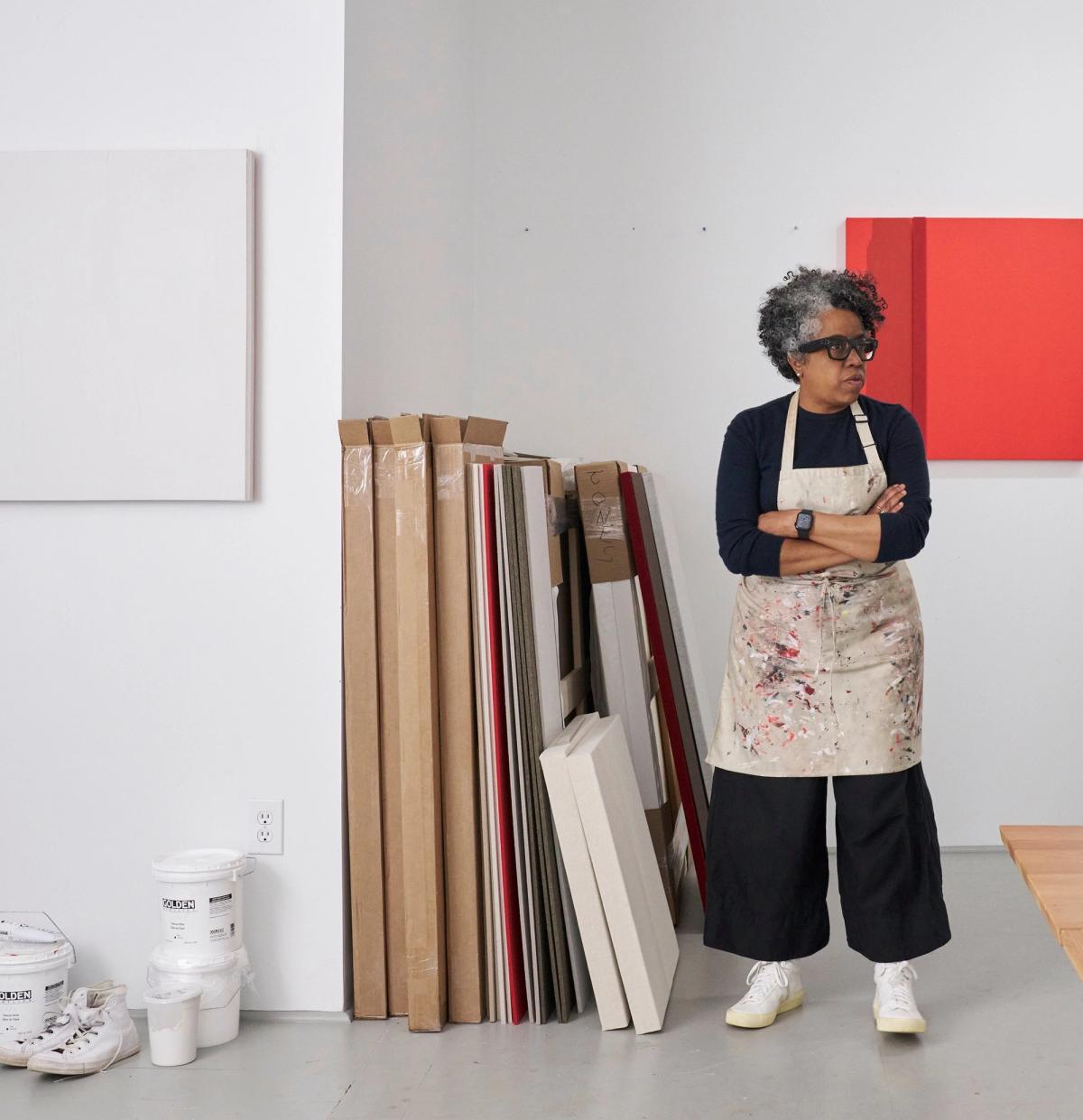What sound does a sculpture make? That is one of the many synesthetic questions the artist Jennie C. Jones conjures in her new commission for the Metropolitan Museum of Art Roof Garden, Ensemble (until 19 October). The monolithic, site-responsive installation uses stringed instruments as experiential analogs for Black contributions to the cultural canon, expanding the Hudson Valley-based artist’s longstanding interest in animating minimalist abstraction with sonic life.
Simultaneously melding with and disrupting views of the New York City skyline of their immediate environs, Jones’s stark, powder-coated aluminium menhirs combine line and acoustics, complicating the quiet, waiting didacticism of conventional outdoor monuments. Based on the formal elements of a zither, a harp and a Blues-inspired one-string, each expectant note of Ensemble coalesces into a layered sensorial tome, inviting viewers into a contemplative, ever-shifting psychic space.
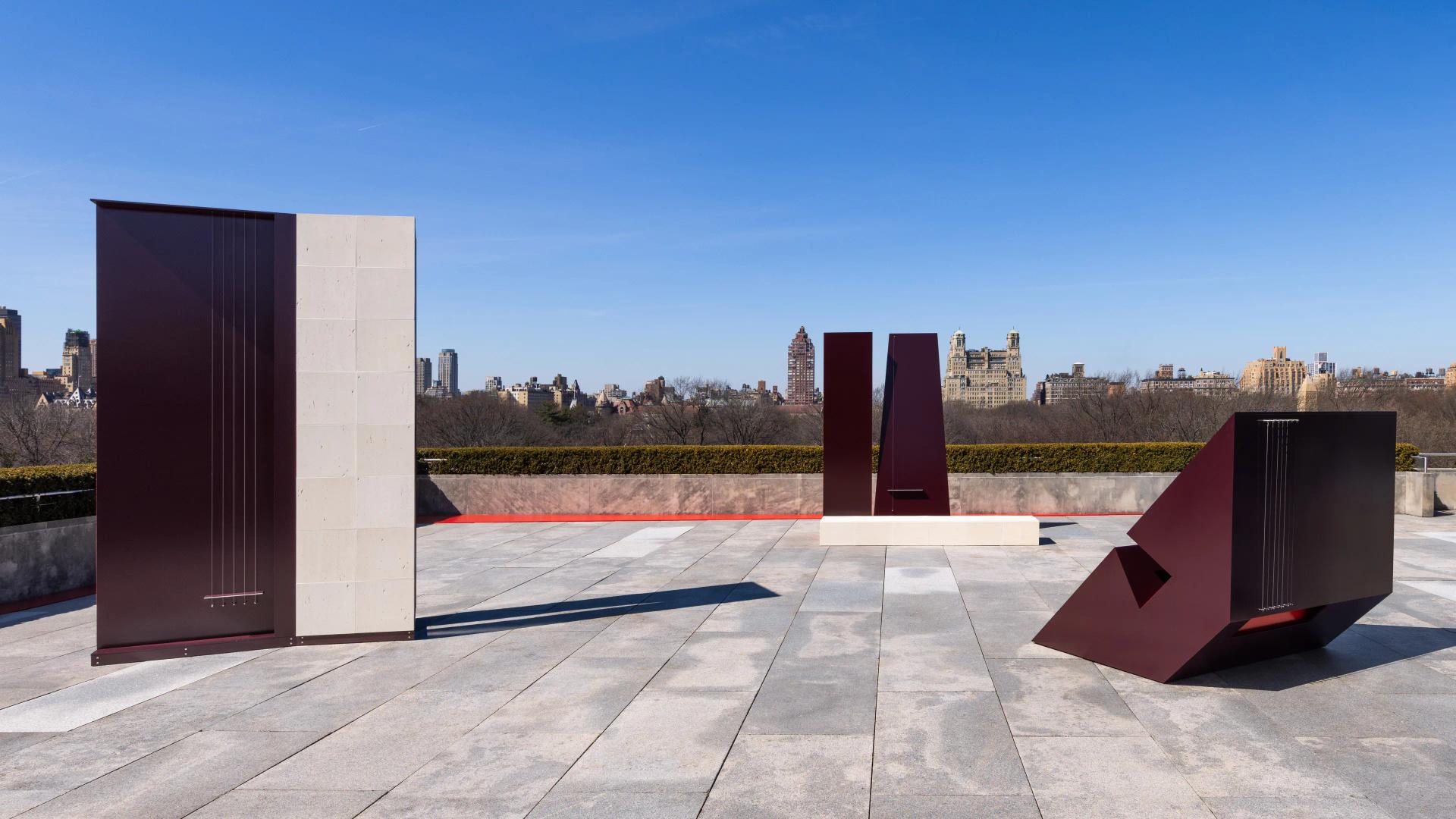
Jennie C. Jones (born 1968, Cincinnati, Ohio), Installation view of The Roof Garden Commission: Jennie C. Jones, Ensemble, 2025. The Metropolitan Museum of Art, Photo by Hyla Skopitz
The Met rooftop installation is only Jones’s second large-scale outdoor project. These (Mournful) Shores, a 2020 creation originally designed for the Clark Art Institute in Williamstown, Massachusetts, uses the seascapes of Winslow Homer as a portal to the Middle Passage, the route enslaved people endured on their journey from Africa to the “New World” across the Atlantic Ocean. The Aeolian harp-inspired work featured in Ensemble draws on the poetic precedent of These (Mournful) Shores; Aeolian harps, by definition, are played by the wind and don’t require musicians to be activated. Visitors must get in close to the sculpture to hear what it has to say.
Jones, a native of Cincinnati, Ohio, has spent her three-decade career exploring the historically under-sung outposts of modernism, deploying sound elements and the act of listening as central tenets of her practice. Taking on the mantle of the Black avant-garde, Jones centres diasporic subjectivity through a material lens, evoking musical notation, specifically jazz, through paintings, sculptures, works on paper and audio compositions. Her past exhibitions include solo shows at the Contemporary Art Museum Houston (in 2015-16), the Arts Club Chicago (2020) and the Solomon R. Guggenheim Museum (2022). Next month at Frieze New York she will be showing new works on Alexander Gray Associates' stand. In September the Pulitzer Arts Foundation in St Louis will open the solo exhibition Jennie C. Jones: A Line When Broken Begins Again (5 September-1 February 2026).
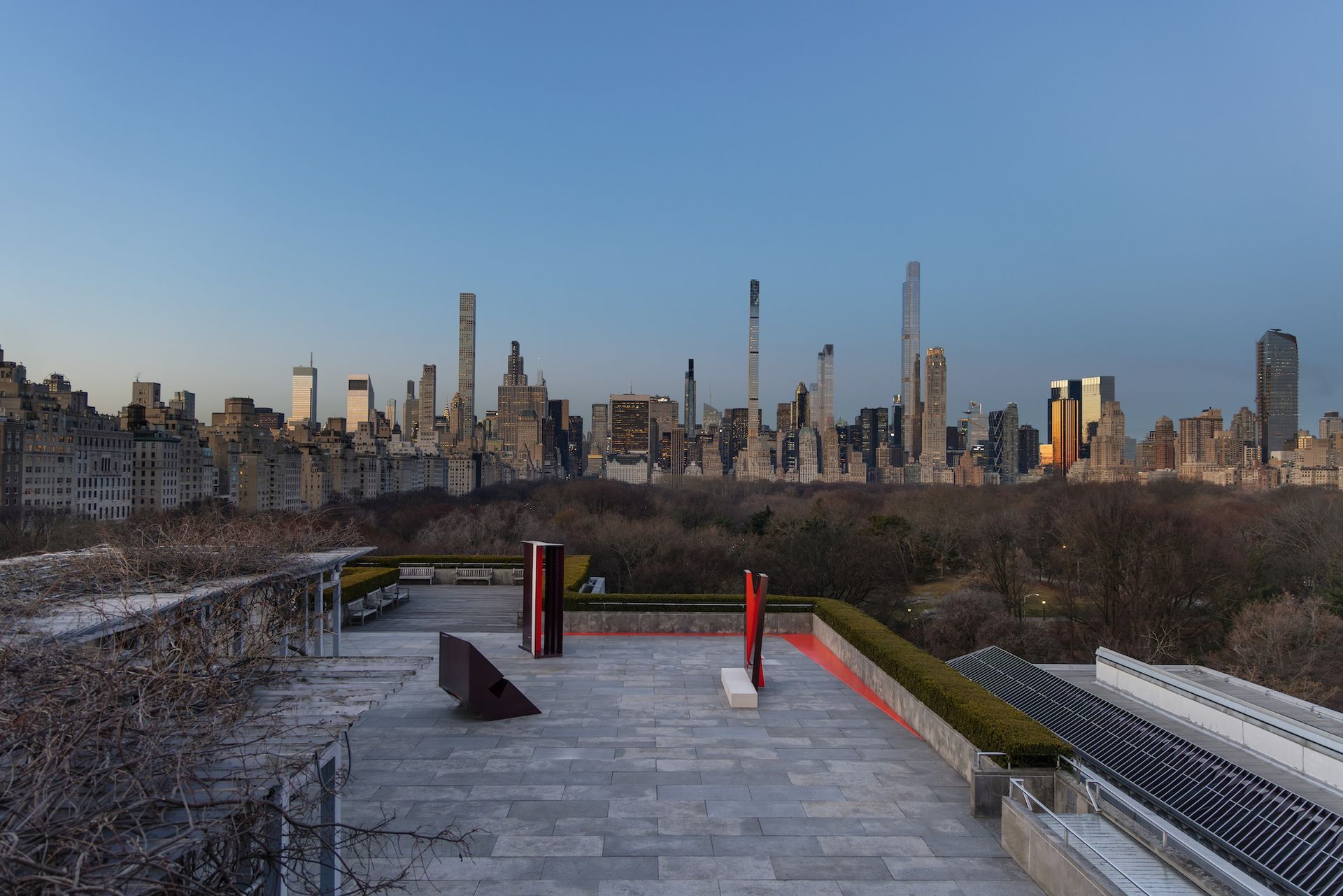
Jennie C. Jones, installation view of The Roof Garden Commission: Jennie C. Jones, Ensemble, 2025 The Metropolitan Museum of Art, Photo by Hyla Skopitz
On the occasion of the Met's rooftop project's unveiling, The Art Newspaper caught up with Jones to talk about sound, absence and logistics.
The Art Newspaper: When you received the Metropolitan Museum commission, what were some of your immediate pragmatic concerns? How were you initially thinking of transforming your practice in the context of an outdoor rooftop space?
Jennie C. Jones: My initial thought was that it's clearly going to offer an opportunity to continue the piece that I made at the Clark because it was my first ambitious outdoor work. But secondly, I really did have a moment where I was overwhelmed with the with the archive, with this site, with this location, being on top of thousands of years of art history. At the end of the day, I pivoted away from going down those rabbit holes, although I did sort of start to try to pick that apart.
I was revisiting Fred Wilson's Mining The Museum, and I was thinking about the institution. I decided to just stay the course with what I've been doing for 30 years and really try to keep that tactile subtle energy.
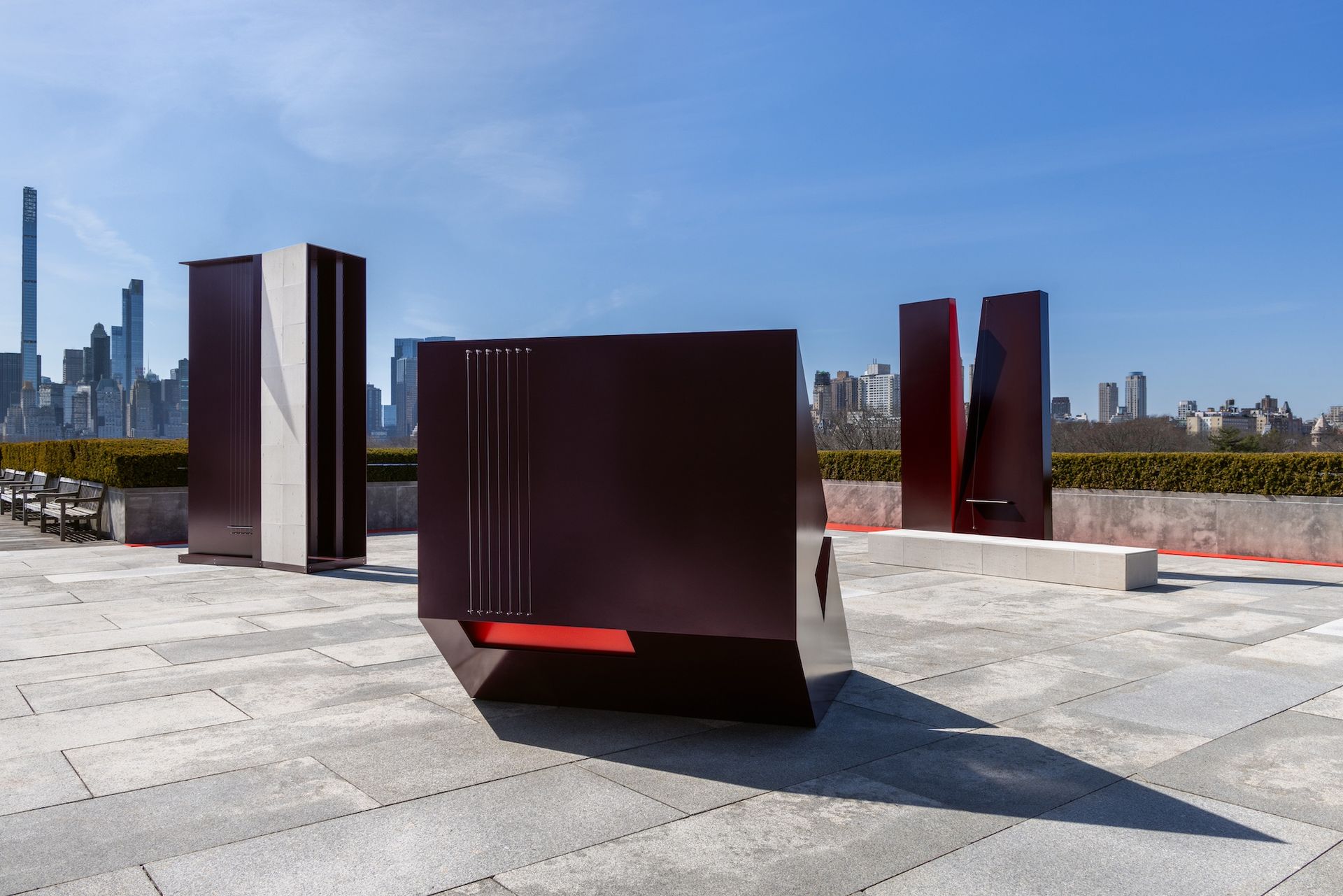
Jennie C. Jones, installation view of The Roof Garden Commission: Jennie C. Jones, Ensemble, 2025 The Metropolitan Museum of Art, Photo by Hyla Skopitz
How were you conceiving of sound elements for an outdoor space?
I kept making kind of jokes that I'm an inside cat and I felt that way with Clark, too. The main entry point was that the Met has its musical instruments department, which I've gone to many, many times over the years. This cacophony of silence and the sonic imagination of wondering what all of these instruments would sound like emerged from that place. So that was another entry point into the piece being about absence and presence, about activation and things that have sonic potential, but still can hold space as objects. So that became important.
Immediately the curator [David Breslin] referenced Walter De Maria’s The Lightning Field; that one photograph that I’ve seen in our history books since I was an undergrad is a magic moment. That kind of work involves anticipation, that yearning and hopefulness that something will happen. The large piece has sung a couple of times, but it's not going to be a consistent thing, and I kind of like that. I kind of like that they can do all these things at the same time, these three pieces up there.
Could you talk about the way that stringed instruments are functioning as conduits to visual art in Ensemble?
The residue of my first reaction, which was to the collection as a whole, the multitude of cultures and objects in that space on the whole, really had me looking back at old-school art history. I know we’re in this moment now where encyclopedic museums are feeling like they have to change their methodology and how they present work, but I connected it to time and music. There’s something in linearity that's so clear and so accessible that I really hope that we don't lose because it creates a reality where music history and art history and Black history are about time writ large. That that sort of linear connection, metaphorically, is there. It's absolutely not overt because you're basically looking at stringed sculptures, but it was another way of thinking about how linearity works in the studio practice, but how these strings are also connective tissues between points and cultures.
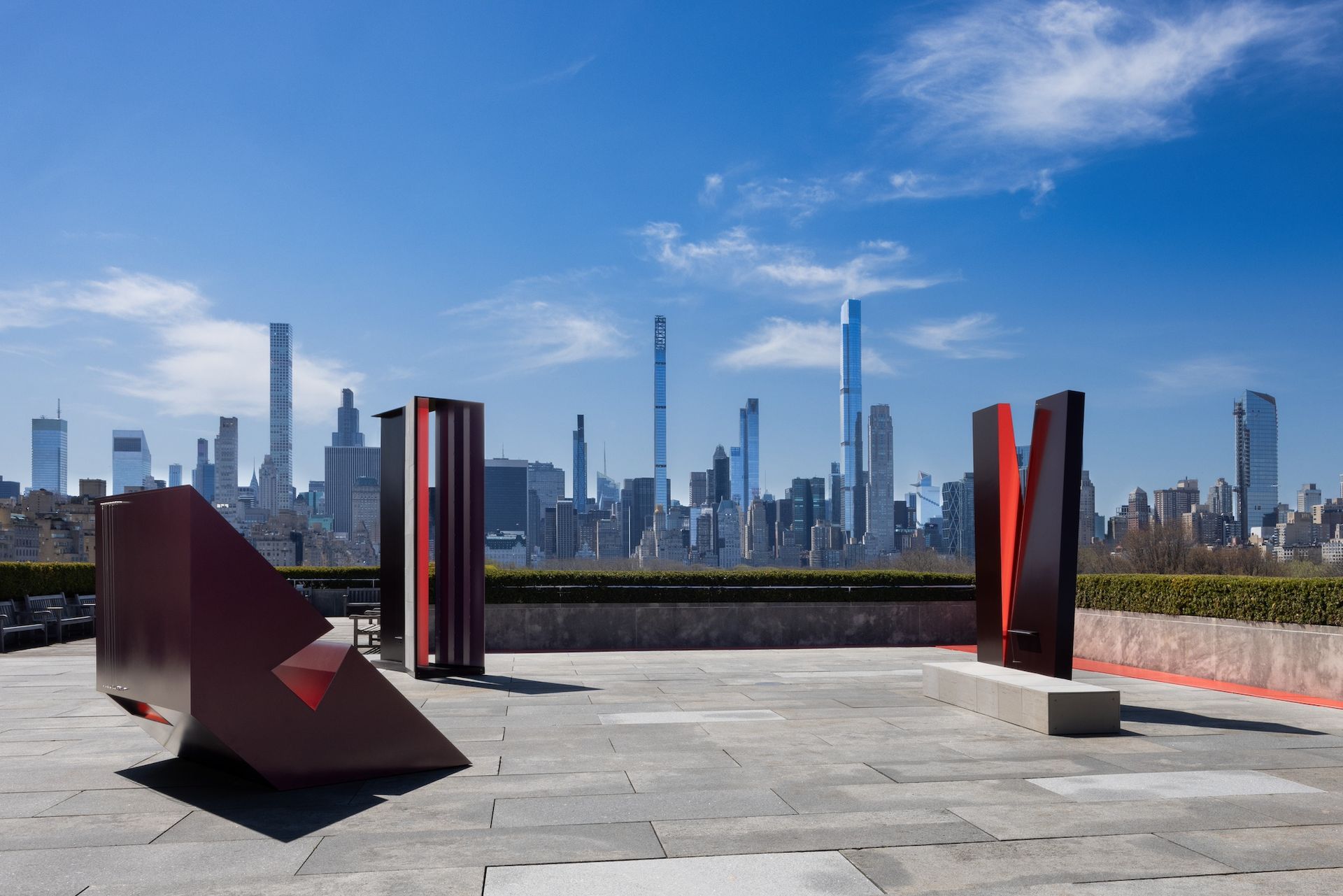
Jennie C. Jones, installation view of The Roof Garden Commission: Jennie C. Jones, Ensemble, 2025 The Metropolitan Museum of Art, Photo by Hyla Skopitz
What is the philosophy of the audience in your practice?
I have anxiety about the expectation of Black performativity, that those outside sculptures are gonna be performing and active and doing something because that's also a part of the expectation of Blackness. To that end, the rooftop really is a bit of non-architecture because it's a stage. It's like a plinth. It's on top of everything with the skyline in the background. I don't really know about audiences.
For the Met, I was more generous with my research and how I build things conceptually, how it might look like there's variations on a theme over time. Maybe I don’t consider audience anymore as much as some might!
- The Roof Garden Commission: Jennie C. Jones, Ensemble, until 19 October, Metropolitan Museum of Art, New York


